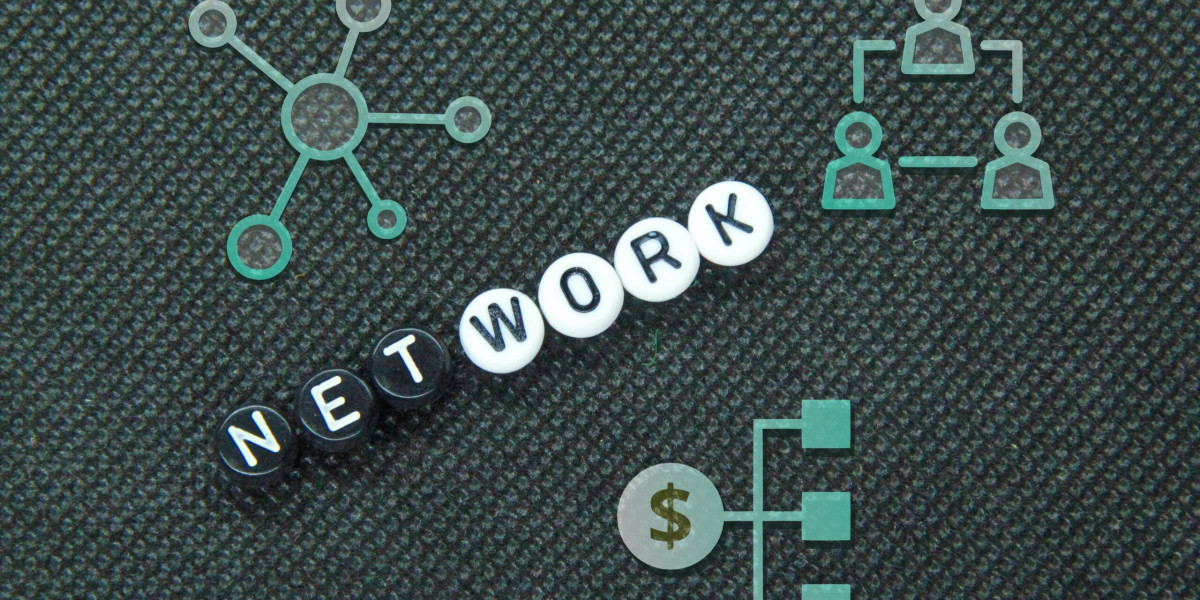The Software Rewrite: A Necessary Evil or a Strategic Reboot?
In the ever-evolving landscape of technology, software applications are the lifeblood of contemporary companies. They power operations, get in touch with consumers, and drive innovation. Nevertheless, software, like any complex system, ages. It can end up being creaky, challenging to maintain, and not able to keep speed with changing company requirements and technological advancements. This scenario frequently leads companies to ponder an extreme however sometimes required step: a software rewrite.
A software rewrite, at its core, is the procedure of reconstructing an existing software application from scratch. It's not simply refactoring or repairing old code; it's a basic re-engineering effort, typically involving a total overhaul of the codebase, architecture, and often even the underlying innovation stack. It's a high-stakes undertaking, fraught with obstacles and potential pitfalls, however when approached tactically, it can revive a stagnant system and unlock significant company benefits.
This article looks into the intricate world of software rewrites, checking out the reasons behind them, the different approaches offered, the intrinsic obstacles, and the best practices to guarantee a successful outcome. We will likewise take a look at when a rewrite is really the right course forward and when alternative strategies may be better suited.
Why Rewrite? Unloading the Motivations
The decision to rewrite software is rarely ignored. It's usually driven by a confluence of aspects that show the existing system is no longer fit for function. Here are some of the most common chauffeurs:
- Accumulated Technical Debt: Over time, software can accrue technical debt-- the implied cost of future rework triggered by picking an easy service now rather of using a better technique. This debt manifests as untidy code, ineffective architecture, and lack of paperwork. Rewriting can be viewed as a way to "pay off" this debt, enabling a cleaner, more maintainable foundation.
- Outdated Technology Stack: Technologies develop rapidly. Software built on outdated structures, languages, or Best Article spinning Tool platforms can become difficult to maintain, protect, and incorporate with modern systems. A rewrite permits migration to a more present and supported innovation stack, opening doors to better efficiency, security, and access to a larger swimming pool of competent developers.
- Scalability Limitations: As businesses grow, their software needs to scale accordingly. Systems developed for smaller sized user bases or less intricate operations might struggle to deal with increased load, causing performance bottlenecks and system failures. A rewrite can be architected with scalability in mind, making sure the application can handle future growth.
- Performance Issues: Sluggish performance can irritate users, impact performance, and even harm a company's reputation. If efficiency concerns are deeply rooted in the architecture or codebase of an existing system, a rewrite might be the most reliable way to address them, allowing for optimization from the ground up.
- Maintainability Nightmares: Legacy systems can become extremely tough and pricey to maintain. Badly recorded code, complicated logic, and an absence of understanding amongst current advancement groups can make even small bug repairs a lengthy and risky venture. A rewrite can lead to a more maintainable and understandable codebase.
- Feature Expansion Obstacles: Adding brand-new features to an aging and complex system can become progressively challenging and pricey. The existing architecture may not be versatile enough to accommodate new functionalities without significant rework and prospective instability. A rewrite can develop a more extensible platform ready for future innovation.
Browsing the Rewrite Landscape: Different Approaches
Once the choice to rewrite is made, organizations are confronted with choosing the right method. There are numerous techniques, each with its own set of benefits and downsides:
The Big Bang Rewrite: This approach involves developing the entire brand-new system in parallel with the existing one. Once the brand-new system is total, the old one is turned off, and the new system is introduced at one time. This is a high-risk, high-reward technique.
- Pros: Potentially faster general timeline if carried out perfectly; complete break from legacy problems.
- Cons: Extremely dangerous; potential for significant company disturbance throughout the switchover; large upfront investment; tough to handle and evaluate a huge system in isolation for a prolonged duration.
The Incremental Rewrite: This method focuses on rewriting the system piece by piece, replacing components of the old system with new, rewritten modules gradually. This enables for a smoother shift and reduces the danger of a complete system failure.
- Pros: Lower risk compared to big bang; constant delivery of worth as parts are reworded; simpler to test and manage smaller sized increments; enables user feedback and adaptation during the process.
- Cons: Can be complex to handle dependencies between old and brand-new parts; might take longer overall to finish the whole rewrite; requires cautious planning and coordination.
The Strangler Fig Pattern: This is a particular kind of incremental rewrite where the new system is built around the old system, gradually "strangling" it piece by piece. New functionalities are developed and deployed as microservices or separate applications, eventually replacing the core functionalities of the old system.
- Pros: Minimizes disruption to the existing system; permits for gradual migration of users to new performances; helps with a microservices architecture; decreases threat through incremental releases.
- Cons: Requires cautious architecture and API design to integrate new parts with the old system; can be complicated to manage routing and data circulation between systems throughout the shift; needs a strong understanding of microservices concepts.
The Rocky Road: Challenges and Pitfalls of Software Rewrites
Software rewrites are notoriously difficult and bring a substantial risk of failure. Many projects have been postponed, over budget plan, or perhaps deserted entirely. Understanding the common mistakes is important for mitigating risks and optimizing the possibilities of success:
- Underestimating Complexity and Scope: Rewriting software is typically more complicated and time-consuming than at first expected. Organizations may ignore the dependences, hidden functionalities, and sheer volume of work involved in recreating a whole system.
- Loss of Domain Knowledge: Over time, understanding about the intricacies of the existing system can end up being fragmented or lost, specifically as initial developers carry on. Rewriting without totally comprehending the subtleties of the existing system can result in missed requirements and functionality spaces in the brand-new system.
- The "Second System Effect": This phenomenon refers to the tendency to overload a brand-new system with functions and improvements that were not present in the original. This can cause feature creep, increased complexity, and hold-ups.
- Business Disruption: Rewrites can interfere with existing company procedures and workflows, especially if the new system introduces considerable modifications in performance or interface. Mindful planning and interaction are important to reduce disturbance and handle user expectations.
- Team Morale and Fatigue: Rewrites are often long and demanding projects that can take a toll on advancement groups. Preserving team morale, motivation, and focus throughout a prolonged rewrite is essential for success.
- Preserving Feature Parity: Ensuring that the new system reproduces all the essential functionalities of the old system is crucial for a smooth transition. Failing to achieve feature parity can lead to user frustration and service disruptions.
- Introducing New Bugs: Even with rigorous testing, rewrites can present brand-new bugs and vulnerabilities. Extensive screening, including unit, integration, and user approval screening, is vital to minimize the risk of post-launch concerns.
Browsing to Success: Best Practices for Software Rewrites
While challenging, software rewrites can be effective when approached strategically and with meticulous preparation. Here are some best practices to think about:
- Define Clear Objectives and Scope: Before starting a rewrite, plainly specify the goals and goals. What issues are you attempting to resolve? What are the must-have features in the brand-new system? A well-defined scope assists prevent feature creep and keeps the job focused.
- Conduct Thorough Planning and Design: Invest substantial time in preparation and designing the new system. This includes defining the architecture, picking the best innovation stack, and documenting requirements in detail. A strong blueprint is essential for directing the development process.
- Welcome an Incremental Approach (When Possible): An incremental rewrite, like the Strangler Fig pattern, significantly lowers threat compared to a big bang method. Breaking down the rewrite into smaller sized, workable increments permits for continuous shipment of worth and simpler risk mitigation.
- Focus On Robust Testing: Testing is critical in a rewrite task. Execute a thorough screening method, including unit tests, combination tests, system tests, and user approval screening. Automate screening any place possible to ensure continuous quality guarantee.
- Carry Out Continuous Integration and Delivery (CI/CD): CI/CD practices enable faster feedback loops, lower combination problems, and assist in regular implementations. This is especially helpful for incremental rewrites, permitting faster shipment of new components.
- Preserve Open Communication and Stakeholder Engagement: Keep stakeholders notified throughout the rewrite process. Routine communication, progress updates, and presentations help manage expectations and guarantee alignment in between technical teams and organization stakeholders.
- Concentrate On Performance Monitoring and Optimization: Performance needs to be a key consideration throughout the rewrite. Execute efficiency monitoring tools to identify traffic jams early on and optimize the system for speed and efficiency.
When to Say "No": Alternatives to Rewriting
Rewriting software is a significant undertaking and should not be the default option. Before dedicating to a rewrite, consider these alternatives:
- Refactoring: Improving the internal structure of the existing code without altering its external habits. Refactoring can attend to technical debt and enhance maintainability without a total rebuild.
- Re-architecting: Modifying the top-level structure of the system without necessarily rewriting tools the whole codebase. This can improve scalability and efficiency.
- Wrapping/Adapting: Creating a layer around the existing system to adjust it to new innovations or incorporate it with modern-day systems. This can be a quicker and less disruptive technique than a full rewrite.
- System Retirement: In some cases, the system might merely be obsolete or no longer supply business value. Retiring the system entirely might be the most cost-effective and strategic alternative.
Conclusion: Rewriting as a Strategic Choice
A software rewrite article software is a complex and tough endeavor, but it can be a strategic need in certain scenarios. When faced with overwhelming technical debt, out-of-date innovation, or important scalability limitations, a well-planned and executed rewrite can renew aging systems, unlock development, and drive future development. However, it is important to carefully weigh the pros and cons, check out options, and approach the procedure with careful planning, robust testing, and a clear understanding of the risks and obstacles involved. A software rewrite ought to be seen not as a fast fix, however as a substantial investment in the future of the software and the business it supports.
Regularly Asked Questions (FAQs)
Q1: How do I understand if my software requires a rewrite?
- A1: Consider a rewrite if you are dealing with several of these concerns:
- Extensive technical financial obligation that prevents advancement and maintenance.
- An outdated technology stack that is no longer supported or limits development.
- Substantial scalability or performance concerns that affect user experience or company operations.
- Severe difficulty and expense associated with keeping or including brand-new functions to the existing system.
- Your team invests more time fixing bugs and working around restrictions than developing brand-new performances.
Q2: What are the most significant threats of a software rewrite?
- A2: The most substantial dangers consist of:
- Cost and time overruns exceeding initial price quotes.
- Service disturbance throughout the rewrite process and the shift to the new system.
- Introduction of new bugs and vulnerabilities in the reworded system.
- Loss of crucial domain knowledge and performance parity.
- Negative impact on team morale and efficiency due to a lengthy and requiring task.
Q3: How long does a software rewrite typically take?
- A3: The timeline differs greatly depending upon the size and intricacy of the system, the picked approach, and the group's capabilities. It can range from numerous months for smaller sized systems to several years for big, complex applications. An incremental approach tends to extend the general timeline but reduces threat and offers value along the way.
Q4: What are the key aspects for an effective software rewrite?

- A4: Key success elements include:
- Clear objectives and scope.
- Extensive planning and architectural design.
- Selecting the right rewrite technique (incremental vs. huge bang).
- Robust screening and quality control throughout the process.
- Strong task management and stakeholder interaction.
- A knowledgeable and devoted advancement group.
- Continuous monitoring and optimization of the brand-new system.
Q5: Is a software rewrite always the best choice?
- A5: No, a rewrite is not constantly the very best choice. Alternatives like refactoring, re-architecting, covering, or perhaps system retirement must be considered initially. A rewrite ought to just be pursued when other alternatives are inadequate to deal with the underlying concerns and accomplish the desired service results. It's a strategic choice that needs mindful evaluation and justification.








